I’ve been there!
It’s super annoying when you’ve put in a lot of effort to tighten the chain, but it just won’t stay put. 😤
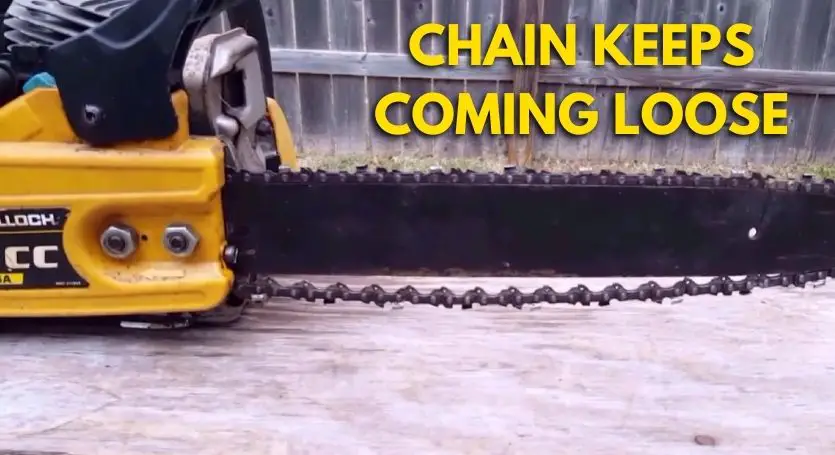
But what causes a chainsaw chain to keep coming loose?
If your chainsaw chain keeps coming loose, it could be due to improper chain tensioning. In addition to that, a worn-out drive sprocket, a wrong-size chain, a broken tensioning screw, or heavy chain stretching could also cause this issue.
I’ve been using chainsaws for more than two decades & gone through this issue countless times!
In this article, I’m going to show you how you can fix this!
So, are you ready??
Let’s get started…
Table of Contents
ToggleWhy is Proper Chain Tensioning Important?
Before I go DEEP into the causes & how you can fix them, let’s first understand why it’s important to have PROPER chain tension.
If your chainsaw chain tension isn’t right, you’re going to face a lot of trouble. For example –
- ☑️ Safety: Safety always comes first! A loose chain can EASILY come off the bar and cause serious injuries.
- ☑️ Damage to the chainsaw: A slack chain can cause damage to the bar, sprocket, and drive components.
- ☑️ Efficiency: You don’t need to be a “rocket scientist” to get that a loose chain won’t cut as well as a snug one. It will make your life a lot harder!
- ☑️ Damage to the workpiece: Crooked, uneven, or rough cuts are often the result of a loose chain. This can seriously mess up how your workpiece looks & how good it turns out.
That’s just one part of the story!
Many folks don’t realize that having a chain that’s too tight can lead to problems, such as:
- Putting extra stress on the engine.
- Making more vibrations.
- Causing wear on the bar & sprocket, and so on.
So, the secret sauce is getting the chain tension just right. Both too-tight and too-loose chains can cause trouble.
How to Tell If a Chainsaw Chain is Loose?
Here are 2 EASY techniques to tell if your chain is loose: 👇
✅ Method 1: If your chain doesn’t sit nice & snug on the bar groove or sags down below the bar, it’s a sure sign that your chain is loose. (look at Figure A below!)
✅ Method 2: If you grab your chain from the bottom & can pull the drive links (the lower part of your chain) all the way out of the groove, you’ve got a loose chain. (check out Figure B below!)
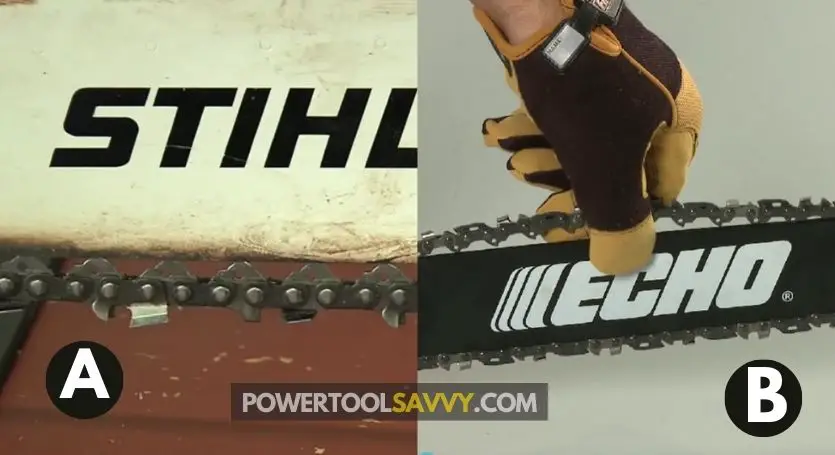
3 Symptoms of a Loose Chain
Here are 4 signs that your chain is too loose:
- The chain falls off during operation: When the tension is too loose, the chain might slip off or jump off the bar while you’re using the saw.
- You feel more vibration than usual: When the chain is loose, you may notice the saw shaking more than it should when you’re cutting.
- Struggling to cut through hardwood: This one’s a bit trickier to spot, but if your saw is having a hard time cutting through hardwood, it might be because the chain is too loose.
- Crooked or uneven cuts: A loose chain can also result in uneven or “crooked” cuts.
But no worries!
The next part is all about how you can make sure your chainsaw chain stays in place. 😎
Chainsaw Chain Keeps Coming Loose - Causes & Solutions
1. You Might Be Tightening the Chain Wrong
Let’s face it:
Tensioning a chainsaw chain is a piece of cake for some but a NIGHTMARE for others!
I’ve seen plenty of folks who believe they’ve got it all figured out, but they still have trouble getting the chain tension right.
And because of that, their chain ends up going loose after just a few minutes of cutting.
Tightening Your Chainsaw Chain the Right Way
- Make sure the engine is OFF.
- Let the chain COOL down first. (This is because chainsaw chains expand when they’re hot.)
- Use the scrench tool to slightly loosen the bar nuts, allowing the tip of the bar to move up & down a bit.
- Lift the tip of the bar and then tighten the tensioner screw until the chain is nice & snug against the bar. (Here’s how tight your chainsaw chain should be)
- Make sure there are no “kinks” in the chain by pulling it out from the bar and letting it go.
- Check the tension again (you should be able to pull the chain around freely, but it shouldn’t hang down at the bottom of the bar!).
- If everything looks OKAY, tighten the bar nuts while holding the tip of the bar up.
2. Your Chain has Stretched Out Too Much
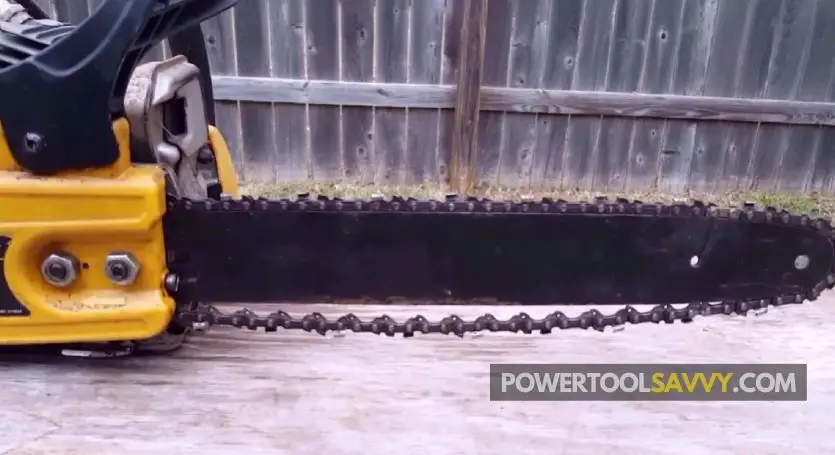
Metal expands when it gets hot and shrinks when it cools down.
Guess what? Chainsaw chains do the same thing!
Most chainsaw chains are made of stainless steel. When you use your saw, the chain warms up and stretches a bit, which can make it go loose.
So, what’s the solution, then?
Tips to Prevent Your Chain from Stretching Out Quickly
- Make sure your chain is always well-lubricated. A well-oiled chain will reduce friction and therefore temperature, which in turn will prevent excessive expansion of your chain.
- Avoid overheating your saw by taking breaks every 20-30 minutes when sawing continuously for a long. This will allow the chain to cool down!
- Always use a sharp chain & replace it when needed! Sharp chains cut through wood more easily, creating less friction and therefore heat. (Here are 5 signs of a dull chain!)
- Make sure the chain is tightened correctly (not too loose, but also not too tight!).
3. Your Drive Sprocket is Worn Out
The sprocket at the end of your guide bar is known as the “drive sprocket.” It’s linked to the clutch drum and its job is to make the chain go around the bar.
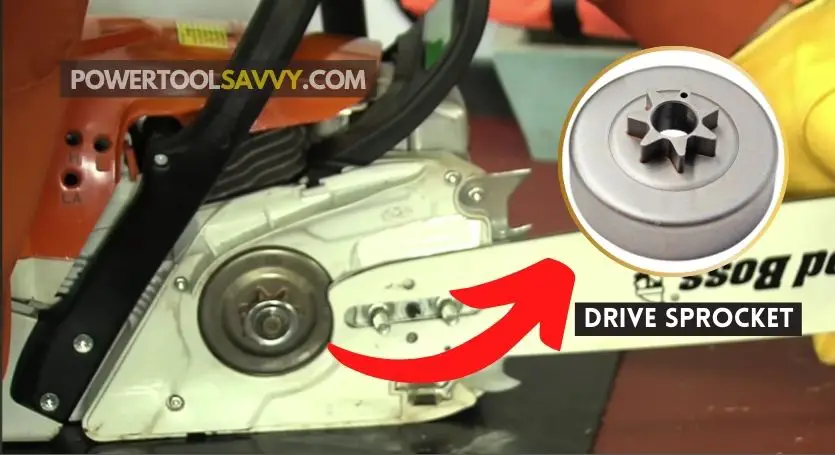
Over time, the drive sprocket gradually wears down because of all the rubbing & it forms deep marks on the teeth.
- Figure A: A fresh, new drive sprocket.
- Figure B: A worn-out drive sprocket.
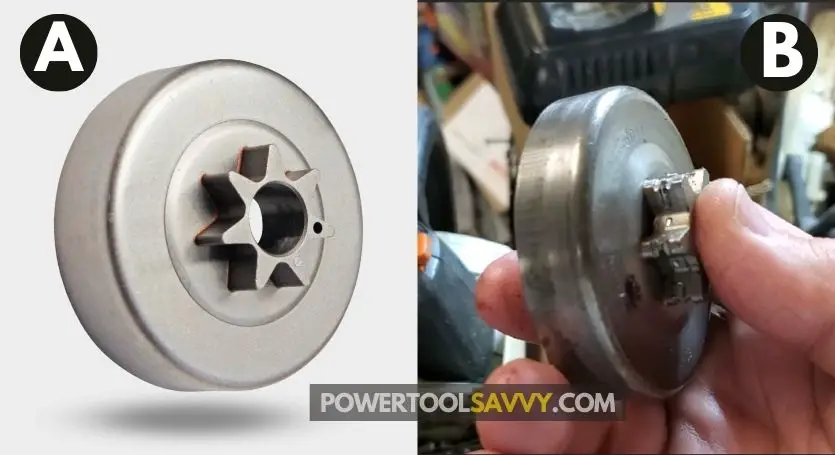
It’s possible that you’re adjusting the chain on a drive sprocket that’s all worn out, and you might not have the chain sitting in the groove correctly.
As a result, when you run your chainsaw, the chain slips into the groove and goes loose.
How to Fix This?
To be frank, a little bit of wear & tear on the drive sprocket is completely normal.
But if the depth of the wear marks is more than 0.5 mm, it’s time to replace your chain sprocket.
(I usually replace my sprocket once every 2 to 3 chain replacements!)
4. The Chain Tensioning Screw isn't Working
If none of those fixes worked, it could be because the chain tensioning screw is broken or not doing its job!
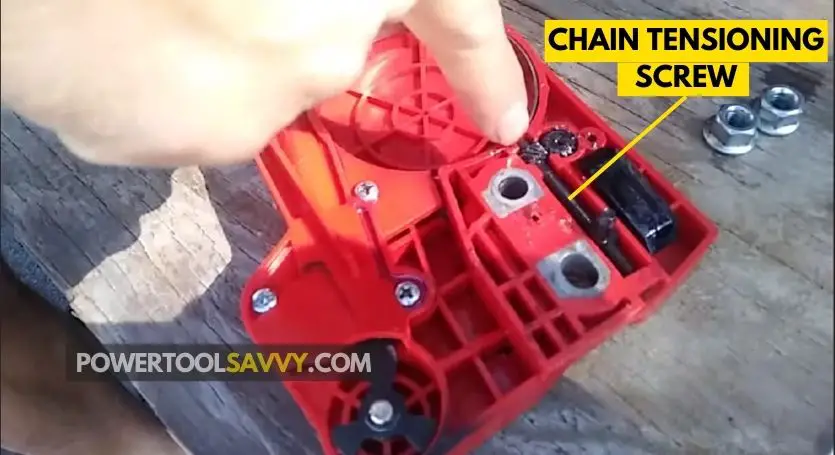
I ran into a similar issue with one of my saws a few weeks ago. No matter how much I tried, the chain just wouldn’t tighten!
Turned out, the trouble was actually with the tensioning screw. The threads had worn out or stripped.
So, I went ahead and swapped it with a new one. Everything’s back to normal now, and it didn’t break the bank either (cost me around 7 bucks).”
How to Check if Your Chain Tensioner Screw is Working?
- Loosen the bar nuts & take off the clutch cover.
- Take out the tensioning screw & inspect it for any damage or rust.
- Check if the threads are still in good shape or they’ve been all stripped out (take a look at the picture below for example).
- Try tightening the screw while keeping the cover in your hand. Check to see if it’s working as it should.
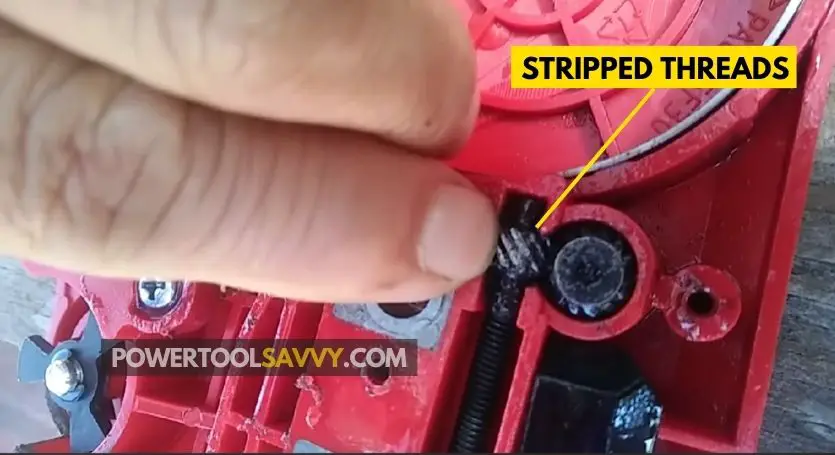
If you notice any signs of damage or if the threads seem worn out, it’s a sign to get yourself a new tensioning screw.
No need to worry! It’s not too expensive.
Just head on over to your nearby hardware store and request a fresh tensioning screw.
5. You are Using the Wrong Size Chain
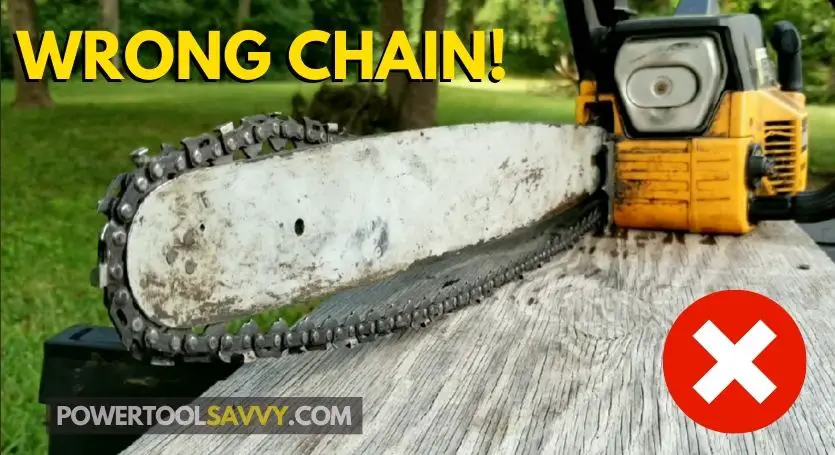
Here’s what you need to know:
Chainsaw chains are not interchangeable. There are different types and sizes of chains, and you have to make SURE that you use the correct size.
If you use a wrong-size chain, it won’t fit snugly on the bar, and it can easily get loose.
Choosing the Right Chain for Your Chainsaw
To choose the right chain for your saw, you only need to know 3 things –
- Chain pitch (A): The distance between any 3 consecutive rivets divided by 2.
- Chain gauge (B): Thickness of drive links of your chain.
- Drive Links (C): Number of drive links your chain has.
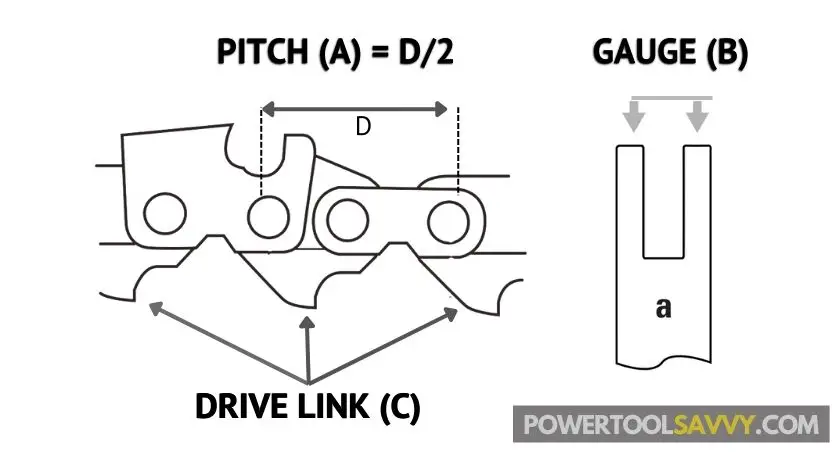
When you have all these numbers, match them with the specs written on the bar you have.
For example, here’s a bar (check the image below) that says 👇
- Pitch: 0.325″
- Gauge: .050″
- Drive Links: 72
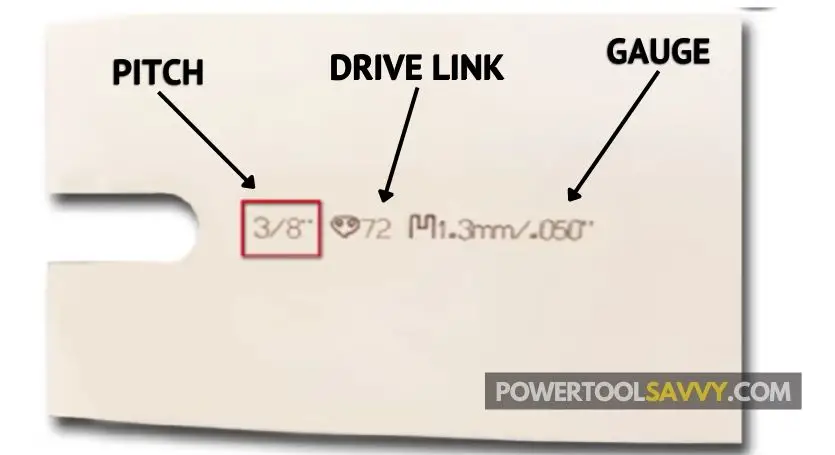
This means you need to get a chain that has 0.325″ pitch, .050″ gauge, and 72 drive links to fit on this bar.
If they don’t match, you’ve got the WRONG size chain. In that case, you’ve no other option but to go out & get the right size chain for your bar!
Well, that’s all for this one!
If you want your chainsaw chain to stay tight for longer, check out this article.

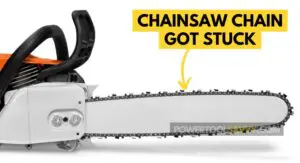
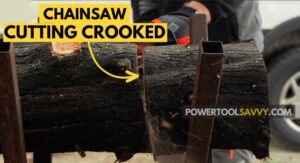
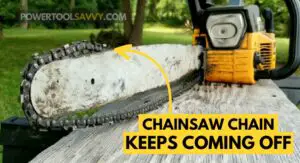
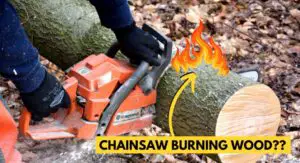

Pingback: Chainsaw Got Stuck in the Tree? Here's How to GET It OUT!
Pingback: Chainsaw Cutting Crooked? Here's How to Get Straight Cuts!
Pingback: Chainsaw Chain Keeps Coming Off? Here's How to FIX It!
Pingback: Chainsaw Not Cutting? Here's How to Get It BACK in Top Form!
Pingback: Chainsaw Chain Won't Tighten? Here's How You FIX It!
Pingback: How to Keep Chainsaw Chain Tight for Longer (7 Amazing Tips)
Pingback: How to Tighten a Chainsaw Chain - The Ultimate Guide
Pingback: Chainsaw Not Oiling the Chain and Bar? Here're 5 EASY Fixes!